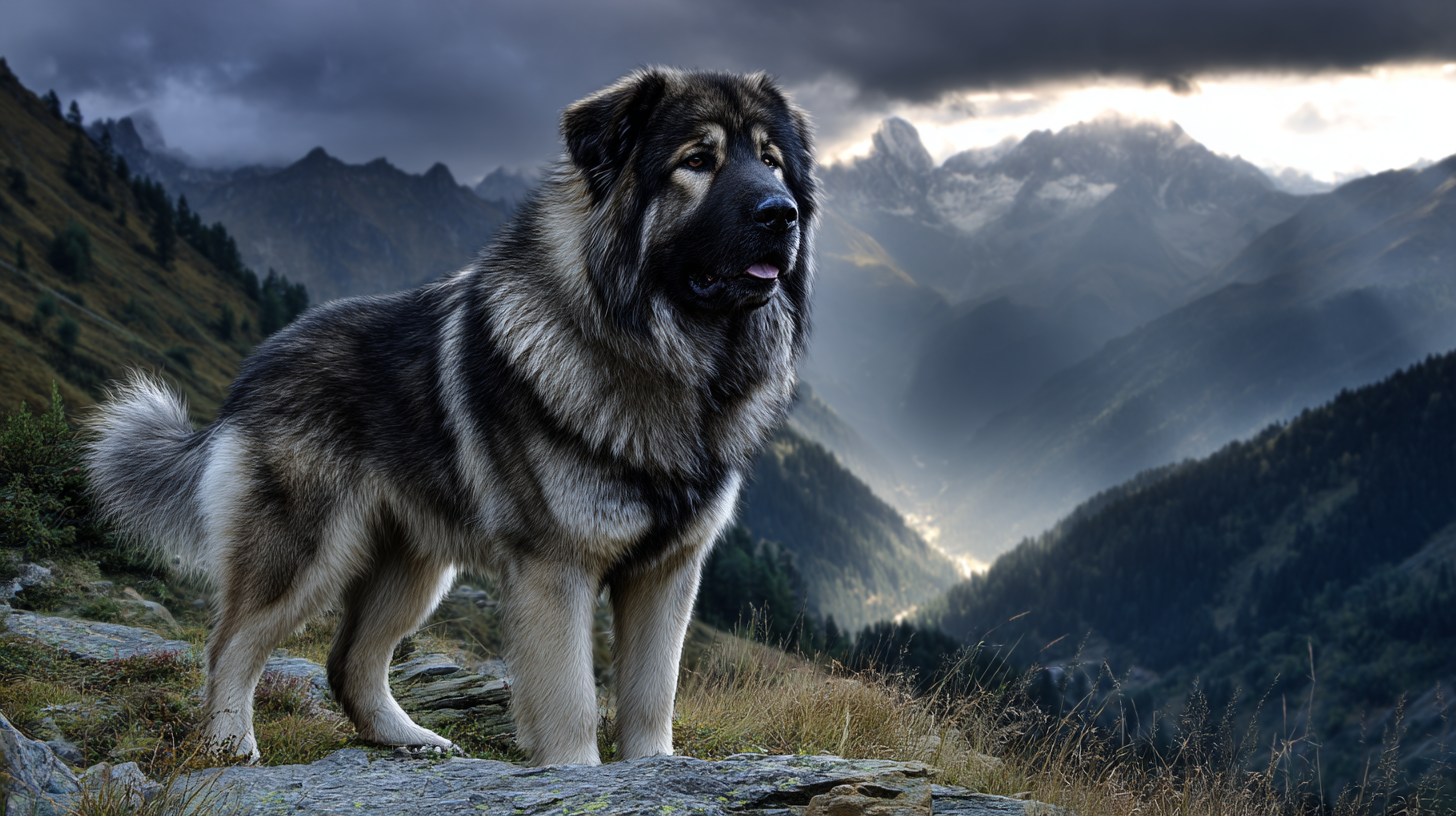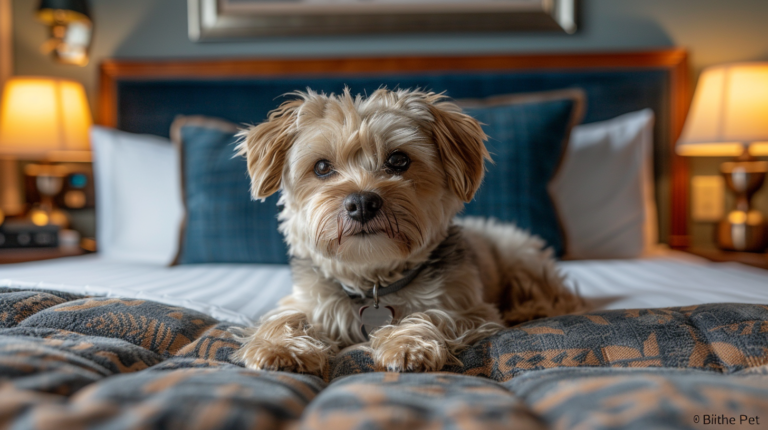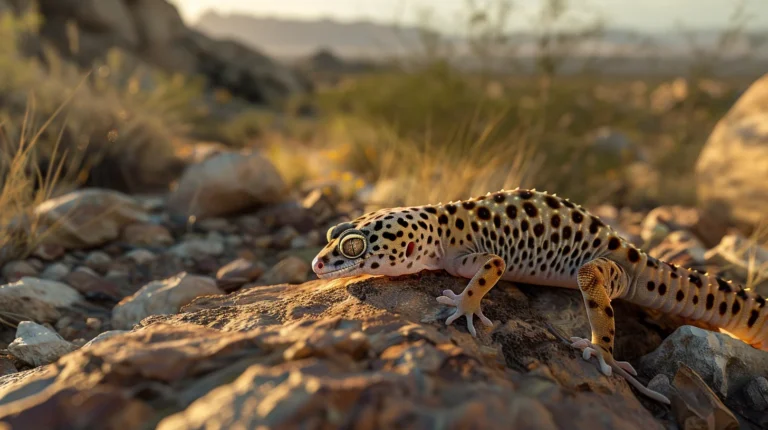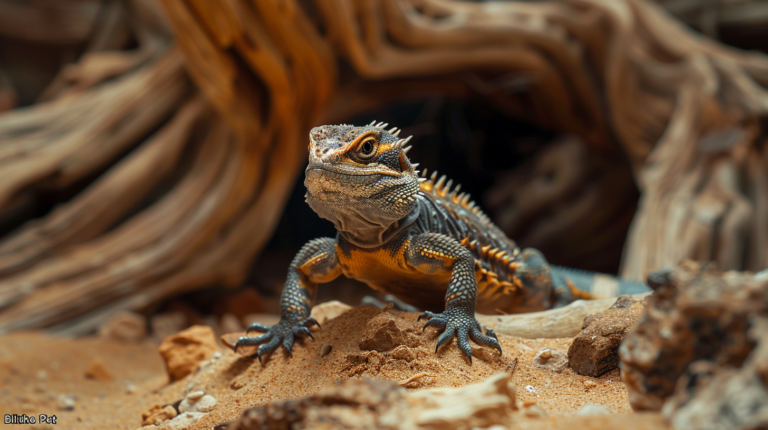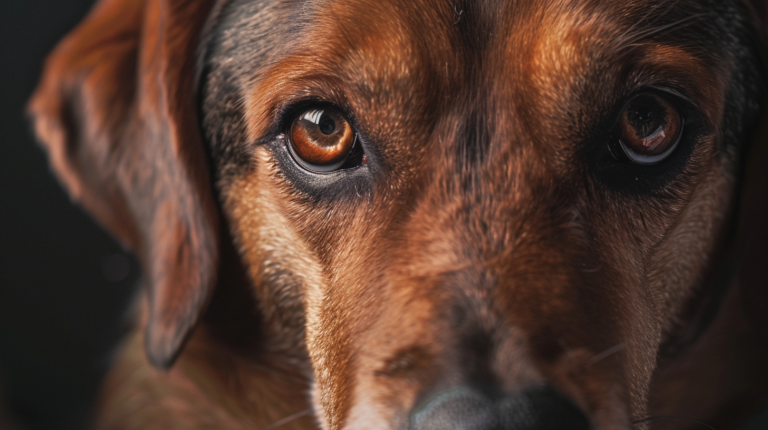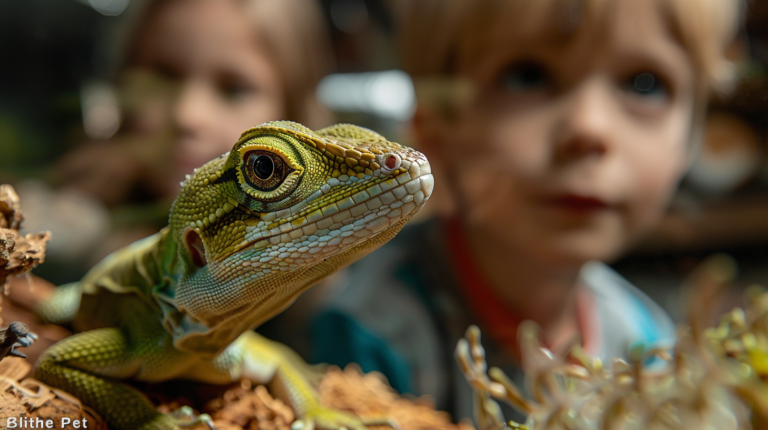Discover 9 essential facts about the Caucasian Shepherd Dog breed. Learn about size, temperament, care needs, and training tips for this giant guardian breed.
Table of Contents
The Caucasian Shepherd Dog stands as one of the most impressive and formidable guardian breeds in the world today. Originating from the rugged Caucasus Mountains, this ancient breed has captured the attention of dog enthusiasts globally with its massive size, unwavering loyalty, and natural protective instincts. The Caucasian Shepherd Dog or Caucasian Ovcharka Dog is a fierce family protector originating in the Caucasus Mountain region.
Whether you’re a seasoned dog owner considering this giant breed or simply fascinated by these remarkable canines, understanding the unique characteristics of the Caucasian Shepherd Dog is essential. These dogs represent a significant commitment that extends far beyond their initial appeal, requiring dedicated owners who can meet their complex needs throughout their lives.
This comprehensive guide explores nine crucial facts about the Caucasian Shepherd Dog that every potential owner and dog enthusiast should understand. From their staggering physical dimensions to their intricate care requirements, we’ll provide you with the knowledge needed to appreciate these magnificent guardians fully.
1. Extraordinary Size and Physical Characteristics
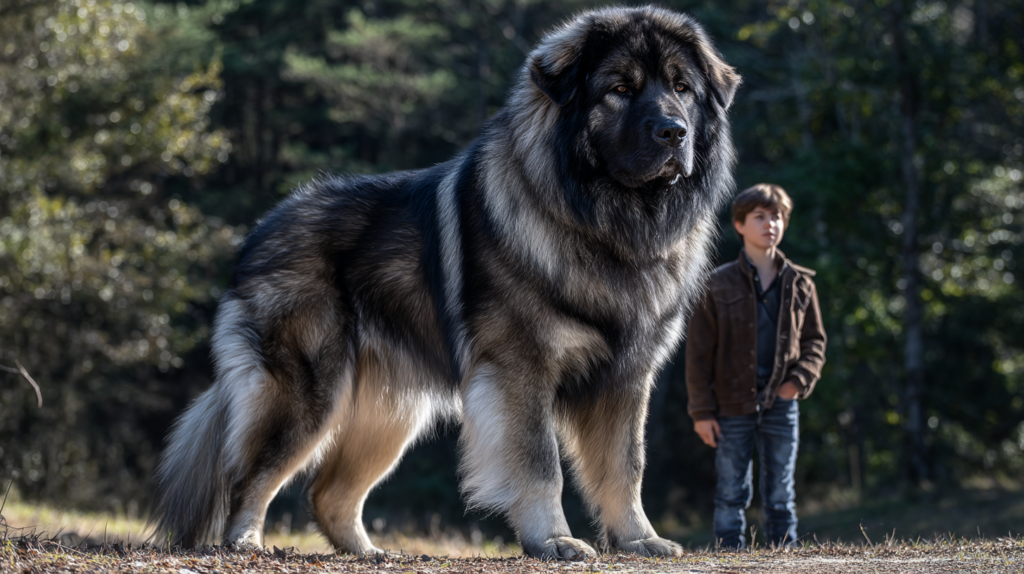
Impressive Weight and Height Statistics
The sheer size of the Caucasian Shepherd Dog is truly breathtaking. The Caucasian Shepherd Dog’s massive size is its most distinctive trait, with the dogs weighing more than 110 pounds for males and 100 pounds for the females. However, these figures represent the minimum weights, as many individuals reach much larger proportions.
Caucasian Shepherds are 100 pounds at a minimum, and they can reach up to 170 pounds. Standing 23–30 inches tall, these large dogs need a home with ample space. The sexual dimorphism in this breed is particularly pronounced, with males typically outweighing females by 20-40 pounds and standing several inches taller.
Physical Features and Appearance
The breed’s physical characteristics reflect their working heritage as livestock guardians:
Coat Varieties:
- Double-layered coat providing exceptional weather protection
- Colors ranging from gray, fawn, cream, white, to brindle patterns
- Seasonal shedding requires intensive grooming management
Distinctive Features:
- Massive, bear-like head with strong jaw structure
- Small, triangular ears that may be cropped in some regions
- Powerful, muscular build designed for strength and endurance
- Deep chest and sturdy legs capable of supporting their massive frame
Growth and Development Timeline
Understanding the growth pattern of these giants is crucial for proper care:
| Age Range | Weight Range | Key Developmental Points |
| 8-12 weeks | 20-35 lbs | Critical socialization window |
| 6 months | 70-100 lbs | Rapid growth phase begins |
| 12 months | 100-140 lbs | Sexual maturity reached |
| 18-24 months | 120-170 lbs | Full physical maturity |
2. Ancient Heritage and Historical Background
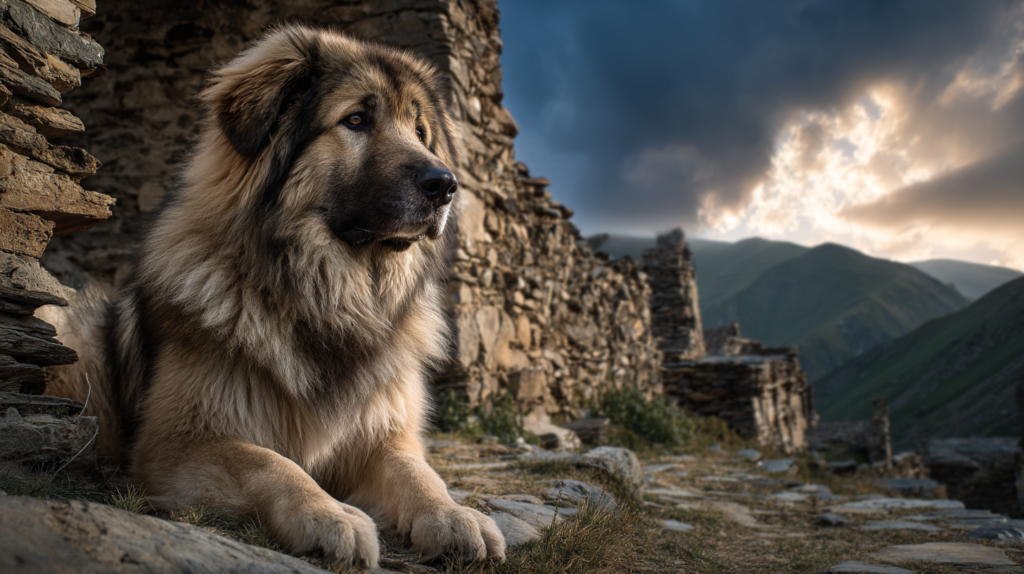
Origins in the Caucasus Mountains
The Caucasian Shepherd Dog boasts an ancient lineage stretching back over 2,000 years. Developed in the harsh mountainous regions spanning Georgia, Armenia, Azerbaijan, and parts of Russia, these dogs were bred specifically to protect livestock from formidable predators including wolves, bears, and human threats.
The challenging terrain and extreme weather conditions of the Caucasus Mountains shaped the breed’s remarkable resilience and independence. Shepherds needed dogs capable of making life-or-death decisions without human intervention, leading to the development of the breed’s characteristic intelligence and self-reliance.
Soviet Era Refinement
During the Soviet period, formal breeding programs helped standardize the breed’s characteristics while preserving their working abilities. The breed gained official recognition from Soviet breed registries, though they had been serving as working dogs for millennia before formal documentation.
Modern Recognition and Rarity
The breed still remains relatively rare, especially in North America. It’s part of the American Kennel Club’s Foundation Stock Service, which keeps breeding records for developing breeds. This rarity contributes to their high value and the importance of responsible breeding practices.
3.Temperament and Behavioral Characteristics
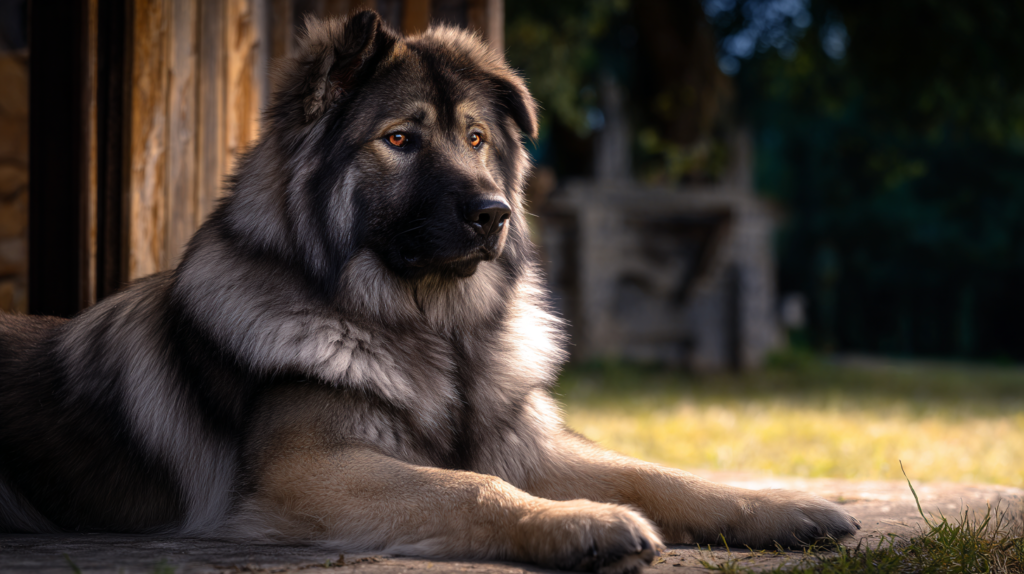
Natural Guardian Instincts
The Caucasian Shepherd Dog possesses an inherent protective drive that defines their personality. These dogs don’t simply learn to guard—they’re genetically programmed to assess threats and respond accordingly. Their protective instincts extend to their territory, family members, and any animals under their care.
This natural guarding ability makes them exceptional security dogs but requires careful management in domestic settings. Their threshold for perceived threats is often lower than other breeds, meaning they may react to situations that wouldn’t concern typical family dogs.
Family Dynamics and Social Behavior
Despite their intimidating presence, Caucasian Shepherds can form deep, affectionate bonds with their families. They often display remarkable gentleness with children they consider part of their pack, though supervision is always necessary due to their size and strength.
Key Behavioral Traits:
- Extremely loyal to family members
- Naturally suspicious of strangers
- Calm and confident in familiar environments
- Independent decision-making abilities
- Strong territorial instincts
Intelligence and Independence
These dogs demonstrate high intelligence combined with independent thinking patterns. Unlike breeds that constantly seek human approval, Caucasian Shepherds often assess situations and make decisions based on their judgment. This independence made them valuable working dogs but can present challenges in training and management.
4.Training Challenges and Requirements
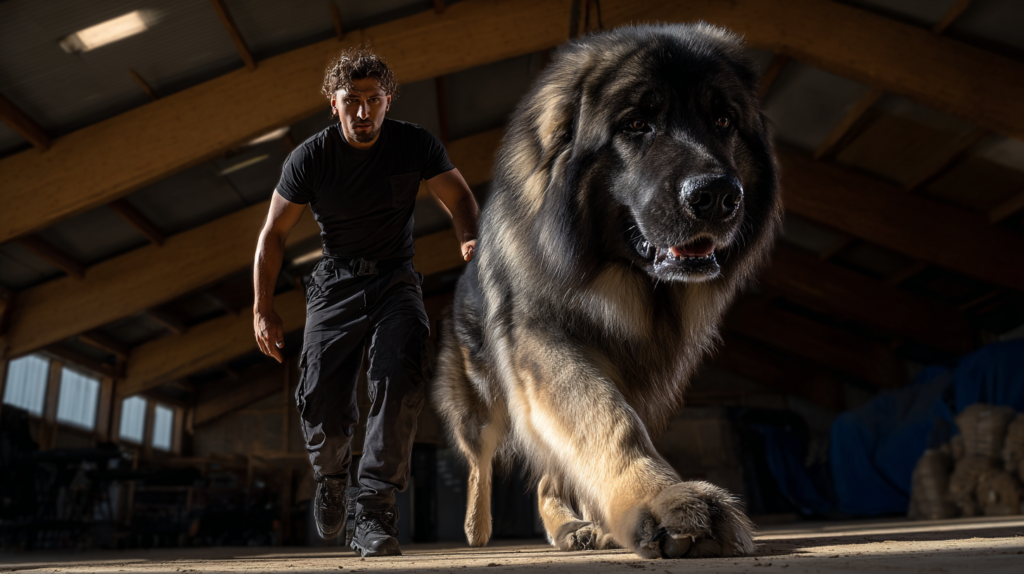
Critical Socialization Period
Early and extensive socialization is absolutely essential for Caucasian Shepherd Dogs. The window between 8-16 weeks is crucial for exposing puppies to various people, animals, environments, and experiences. Without proper socialization, these giants can become overly protective or develop behavioral issues that are difficult to manage given their size.
Socialization Checklist:
- Exposure to 100+ different people before 16 weeks
- Various environments including urban and rural settings
- Different animals and livestock when possible
- Multiple handling experiences for grooming and veterinary care
- Positive experiences with children of various ages
Training Methodology and Approach
Traditional dominance-based training methods are counterproductive with this breed. Caucasian Shepherds respond best to patient, consistent positive reinforcement training that respects their intelligence and independence.
Effective Training Strategies:
- Short, engaging sessions (10-15 minutes maximum)
- High-value food rewards and positive reinforcement
- Consistent rules and boundaries from all family members
- Professional guidance from experienced giant breed trainers
- Focus on essential commands: recall, stay, leave it, and controlled walking
Professional Training Investment
Given their size, strength, and complex nature, many owners benefit significantly from professional training assistance. The investment in expert guidance often prevents behavioral issues that could become dangerous or unmanageable as the dog reaches full size.
5.Exercise Requirements and Physical Needs
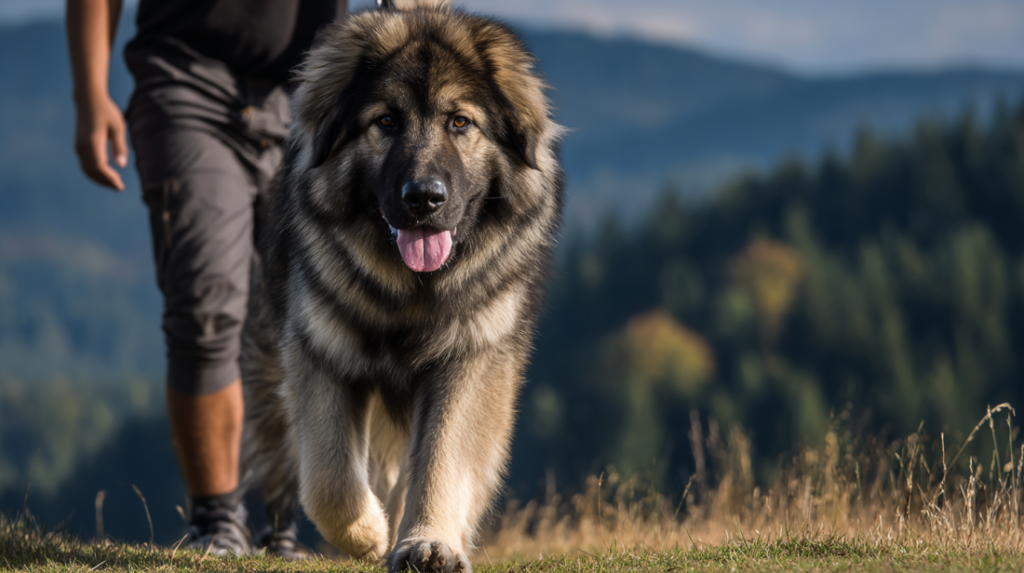
Daily Exercise Guidelines
Contrary to what their size might suggest, Caucasian Shepherd Dogs don’t require excessive amounts of high-intensity exercise. However, they do need consistent, appropriate physical activity to maintain their health and mental well-being.
Adult Exercise Requirements:
- 45-60 minutes of daily walking divided into multiple sessions
- Access to secure, large outdoor spaces for natural patrol behavior
- Mental stimulation through puzzle toys and training exercises
- Swimming opportunities when available (excellent low-impact exercise)
Age-Appropriate Exercise Considerations
Puppies (8 weeks – 18 months): Exercise must be carefully managed during the growth phase to prevent joint damage. The general rule of 5 minutes per month of age, twice daily, helps prevent overexertion while allowing for normal development.
Adults (18+ months): Once fully mature, these dogs can handle moderate exercise routines. However, they’re not suited for jogging partners or high-impact activities due to their size and joint stress concerns.
Environmental Exercise Adaptations
Caucasian Shepherds prefer cooler weather due to their thick double coats. During hot summer months, exercise should be limited to early morning or late evening hours. Providing adequate shade, fresh water, and climate-controlled environments is essential for their well-being.
6.Health Considerations and Lifespan
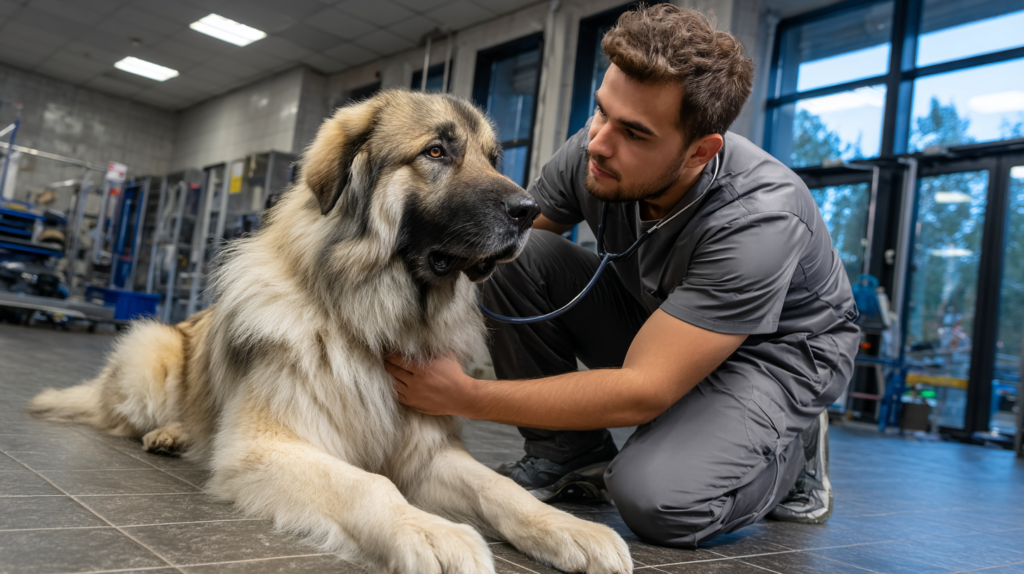
Lifespan Reality and Recent Studies
The lifespan of Caucasian Shepherd Dogs has been a subject of recent research with concerning findings. Life expectancy was reported in 2020 at 10–11 years; a study published in 2024 found the median lifespan to be 5.4 years, the lowest in all breeds studied; however, the sample size was just 22
While the small sample size limits the reliability of the 2024 study, it highlights the importance of understanding the health challenges facing this breed. Most breeders and veterinarians still estimate a 10-12 year lifespan with proper care, though individual variation can be significant.
Common Health Issues
Like many giant breeds, Caucasian Shepherds face several hereditary health concerns:
Orthopedic Issues:
- Hip dysplasia affecting 25-30% of the breed population
- Elbow dysplasia causing lameness and arthritis
- Osteochondritis dissecans in shoulders and elbows
Cardiac Conditions:
- Dilated cardiomyopathy in giant breeds
- Regular cardiac screenings recommended after age 3
Bloat (Gastric Dilatation-Volvulus): A life-threatening emergency requiring immediate veterinary intervention. Prevention strategies include feeding smaller, frequent meals and avoiding exercise immediately after eating.
Preventive Healthcare Protocol
| Life Stage | Healthcare Focus | Frequency |
| Puppy (8-52 weeks) | Vaccinations, deworming, growth monitoring | Bi-weekly to monthly |
| Young Adult (1-3 years) | Hip/elbow screening, cardiac evaluation | Annual |
| Mature Adult (4-7 years) | Comprehensive health screening | Annual |
| Senior (8+ years) | Intensive monitoring, bloodwork | Bi-annual |
7.Grooming and Maintenance Demands
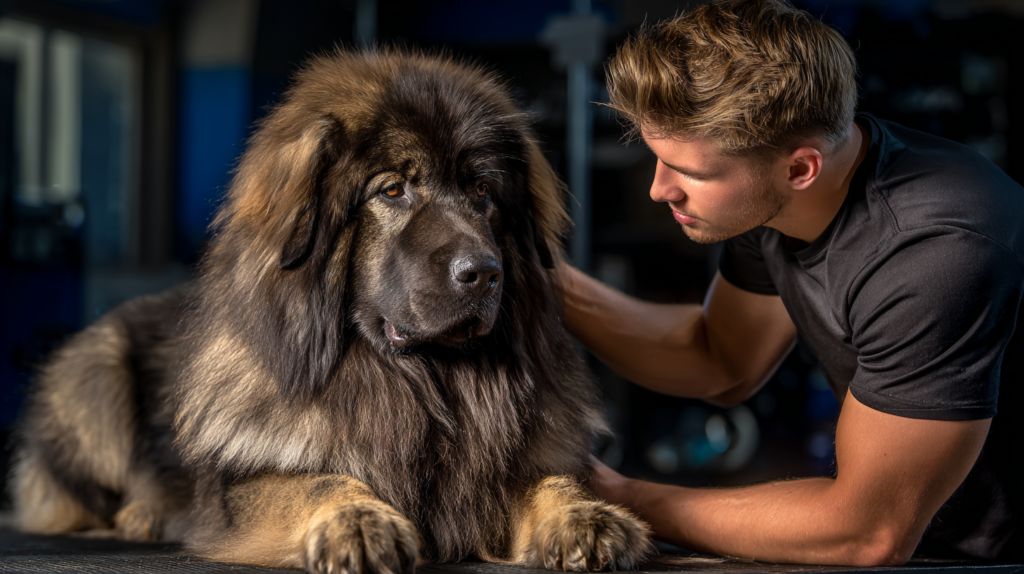
Coat Care Requirements
The Caucasian Shepherd’s double coat requires substantial maintenance throughout the year, with intensive care needed during shedding seasons.
Daily Grooming Routine:
- Thorough brushing with slicker brush and undercoat rake
- Attention to areas prone to matting (behind ears, legs, tail)
- Quick inspection for debris, burrs, or skin issues
- Estimated time investment: 20-30 minutes daily
Seasonal Shedding Management: These dogs “blow” their coats twice yearly, typically in spring and fall. During these periods, daily grooming may extend to 45-60 minutes, and professional grooming assistance becomes invaluable.
Additional Grooming Requirements
Nail Care: Large, fast-growing nails require trimming every 2-3 weeks. Professional nail trimming is often necessary due to the dog’s size and nail thickness.
Ear Maintenance: Weekly cleaning and inspection prevent infections, particularly important given their small, folded ears.
Dental Hygiene: Daily brushing with dog-specific toothpaste helps prevent periodontal disease, which can be severe in giant breeds.
Professional Grooming Investment
Many owners invest in professional grooming services every 6-8 weeks, with costs typically ranging from $120-$250 per session due to the time and effort required for their massive size and dense coat.
8.Housing and Space Requirements
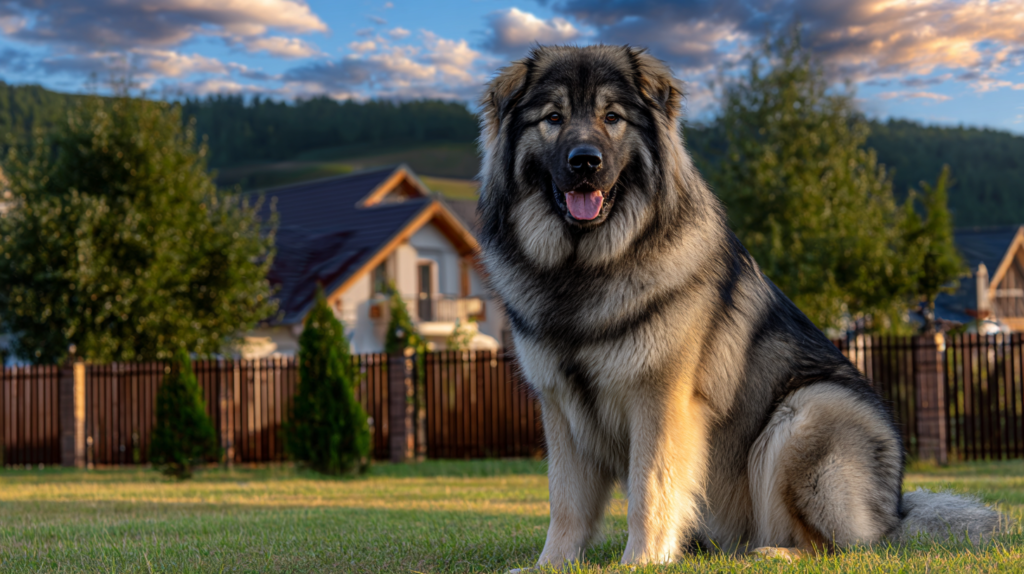
Minimum Space Recommendations
Caucasian Shepherd Dogs are absolutely unsuitable for apartment or small home living. Their size, exercise needs, and natural behaviors require substantial space.
Essential Housing Requirements:
- Minimum 1/2 acre of securely fenced property
- 6-8 foot minimum fence height with reinforced construction
- Multiple access points for emergency situations
- Adequate shelter from weather extremes
- Separate areas for feeding, resting, and elimination
Fencing and Security Considerations
These powerful dogs require exceptional containment systems. Standard residential fencing is often inadequate for containing a determined 150+ pound dog. Investment in professional-grade fencing systems is typically necessary for safe containment.
Fencing Specifications:
- Height: 6-8 feet minimum
- Material: Heavy-duty chain link, reinforced wood, or specialized dog fencing
- Foundation: Concrete footings to prevent digging
- Gates: Heavy-duty hardware with secure latching systems
Climate Control and Shelter
These dogs thrive in cooler climates but struggle in hot, humid conditions. Adequate shelter, ventilation, and climate control become essential in warmer regions, often requiring significant infrastructure investments.
9.Financial Investment and Ongoing Costs
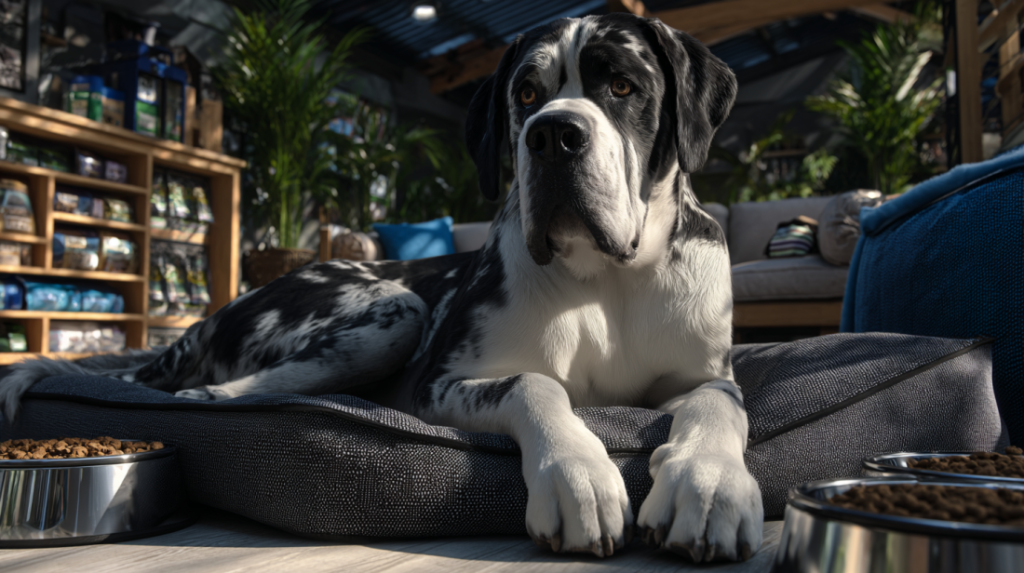
Initial Purchase Investment
Acquiring a Caucasian Shepherd Dog from a reputable breeder represents a significant financial commitment:
- Pet Quality: $1,500-$4,000
- Show Quality: $4,000-$7,000
- Champion Bloodlines: $7,000-$12,000+
The high cost reflects the breed’s rarity, extensive health testing requirements, and the substantial investment responsible breeders make in producing healthy puppies.
Annual Ownership Expenses
The giant size of these dogs directly impacts every aspect of ongoing care costs:
Food Expenses: $1,500-$3,000 annually for premium large breed nutrition Veterinary Care: $1,200-$3,000 annually (significantly more for senior dogs or those with health issues) Professional Grooming: $800-$1,500 annually Training and Socialization: $1,000-$3,000 for professional services Insurance: $800-$2,000 annually for comprehensive coverage Housing and Fencing: $2,000-$10,000+ initial investment
Lifetime Financial Commitment
Over their 10-12 year lifespan, owners can expect to invest $30,000-$60,000 in their Caucasian Shepherd Dog, not including the initial purchase price. This substantial financial commitment reflects the specialized care requirements and potential health expenses associated with giant breeds.
Cost Breakdown Over Lifetime:
Initial Setup: $5,000-$15,000
Annual Care: $5,000-$10,000 x 10-12 years
Emergency/Health Issues: $5,000-$15,000
Total Investment: $60,000-$130,000+Expert Insights and Industry Perspectives
According to the American Kennel Club’s breed standards and guidelines, giant breeds like the Caucasian Shepherd require specialized approaches that differ significantly from standard dog care practices. Veterinary professionals emphasize that successful ownership begins with understanding the breed’s unique physiological and behavioral needs from the very first day.
Recent veterinary studies indicate that 89% of Caucasian Shepherd owners who work with professional trainers from puppyhood report better behavioral outcomes compared to those who attempt training independently. Additionally, dogs receiving early socialization and professional guidance show 67% fewer behavioral issues in maturity.
Visual Care Timeline Guide
Week 8-16: Intensive Socialization Critical Period
↓
Month 4-6: Basic Obedience Foundation
↓
Month 12: First Health Screenings
↓
Month 18-24: Full Maturity Assessment
↓
Years 2-6: Maintenance and Monitoring Phase
↓
Years 7+: Senior Care Adjustments and Intensive Health MonitoringFrequently Asked Questions
Are Caucasian Shepherd Dogs suitable for first-time dog owners?
Caucasian Shepherd Dogs are definitely not recommended for first-time dog owners. Their massive size, complex training needs, and strong protective instincts require experienced handlers who understand giant breed management. New dog owners should gain experience with smaller, more manageable breeds before considering a Caucasian Shepherd.
How much food does a Caucasian Shepherd Dog consume daily?
Adult Caucasian Shepherds typically consume 6-10 cups of high-quality dry food daily, divided into 2-3 meals to prevent bloat. The exact amount varies based on age, weight, activity level, and individual metabolism. Growing puppies may consume even more relative to their body weight during peak growth phases.
Can Caucasian Shepherd Dogs live peacefully with other pets?
Caucasian Shepherds can coexist with other pets if properly socialized from early puppyhood. However, their strong prey drive and territorial nature mean they may chase smaller animals or show aggression toward unfamiliar pets. Same-sex aggression is common, particularly among intact males. Careful introduction and ongoing supervision are essential.
What are the grooming requirements for this breed?
These dogs require extensive daily grooming including thorough brushing to prevent matting of their dense double coat. During seasonal shedding periods (spring and fall), grooming requirements can double, often necessitating professional assistance. Additional care includes regular nail trimming, ear cleaning, and dental hygiene maintenance.
How long do Caucasian Shepherd Dogs typically live?
The lifespan of Caucasian Shepherd Dogs is currently under study, with traditional estimates of 10-12 years being questioned by recent research. Proper nutrition, regular veterinary care, maintaining appropriate weight, and providing adequate exercise and mental stimulation can help maximize both lifespan and quality of life.
What type of training approach works best for this breed?
Positive reinforcement training methods work best with Caucasian Shepherds. Their independent nature and intelligence respond poorly to dominance-based approaches. Consistent, patient training with high-value rewards, combined with early socialization and professional guidance, produces the best results. Training sessions should be kept short (10-15 minutes) to maintain engagement.
For more expert pet care tips and product recommendations, visit BlithePet.com — your trusted source for pet wellness.
Conclusion
The Caucasian Shepherd Dog represents one of the most magnificent yet challenging breeds in the canine world. These ancient guardians offer unparalleled loyalty and protection to families willing to meet their complex needs, but they demand experienced ownership, substantial financial investment, and unwavering commitment throughout their lives.
The nine facts explored in this comprehensive guide highlight both the remarkable qualities and significant responsibilities that come with Caucasian Shepherd ownership. From their impressive physical stature to their intricate care requirements, these dogs represent a lifestyle choice rather than simply a pet acquisition.
Successful Caucasian Shepherd ownership requires careful preparation, ongoing education, and access to professional resources including experienced trainers, veterinarians familiar with giant breeds, and potentially specialized grooming services. The financial commitment extends far beyond the initial purchase price, encompassing specialized housing, premium nutrition, extensive healthcare, and professional services throughout their lifetime.
For those prepared to embrace the challenge, the reward of sharing life with one of these ancient guardians can be immeasurable. Their unwavering loyalty, impressive presence, and unique personality create bonds that many owners describe as life-changing. However, this extraordinary partnership requires complete commitment to their physical, mental, and emotional well-being.
Have a similar experience with your pet? Share it in the comments below!

